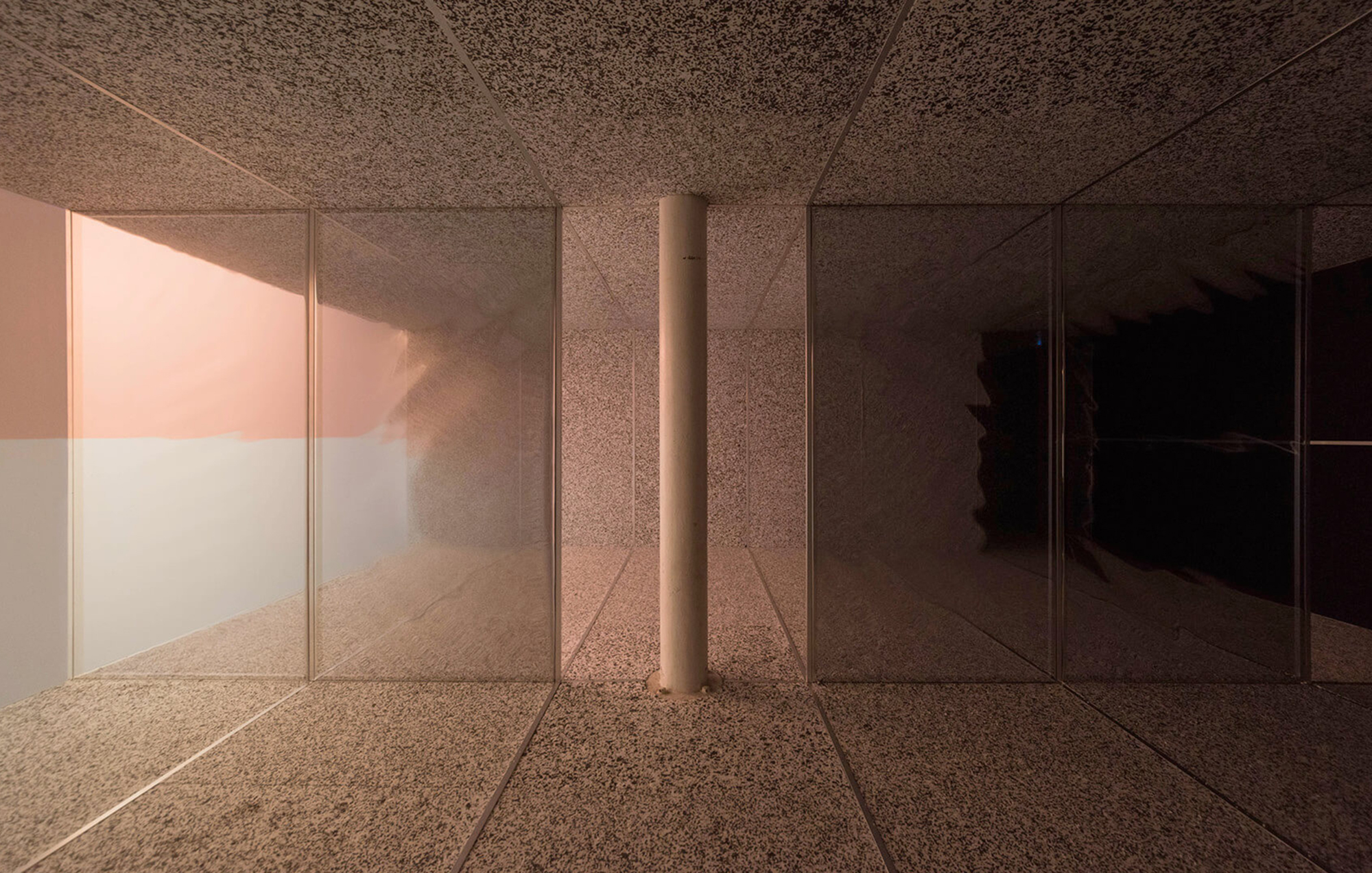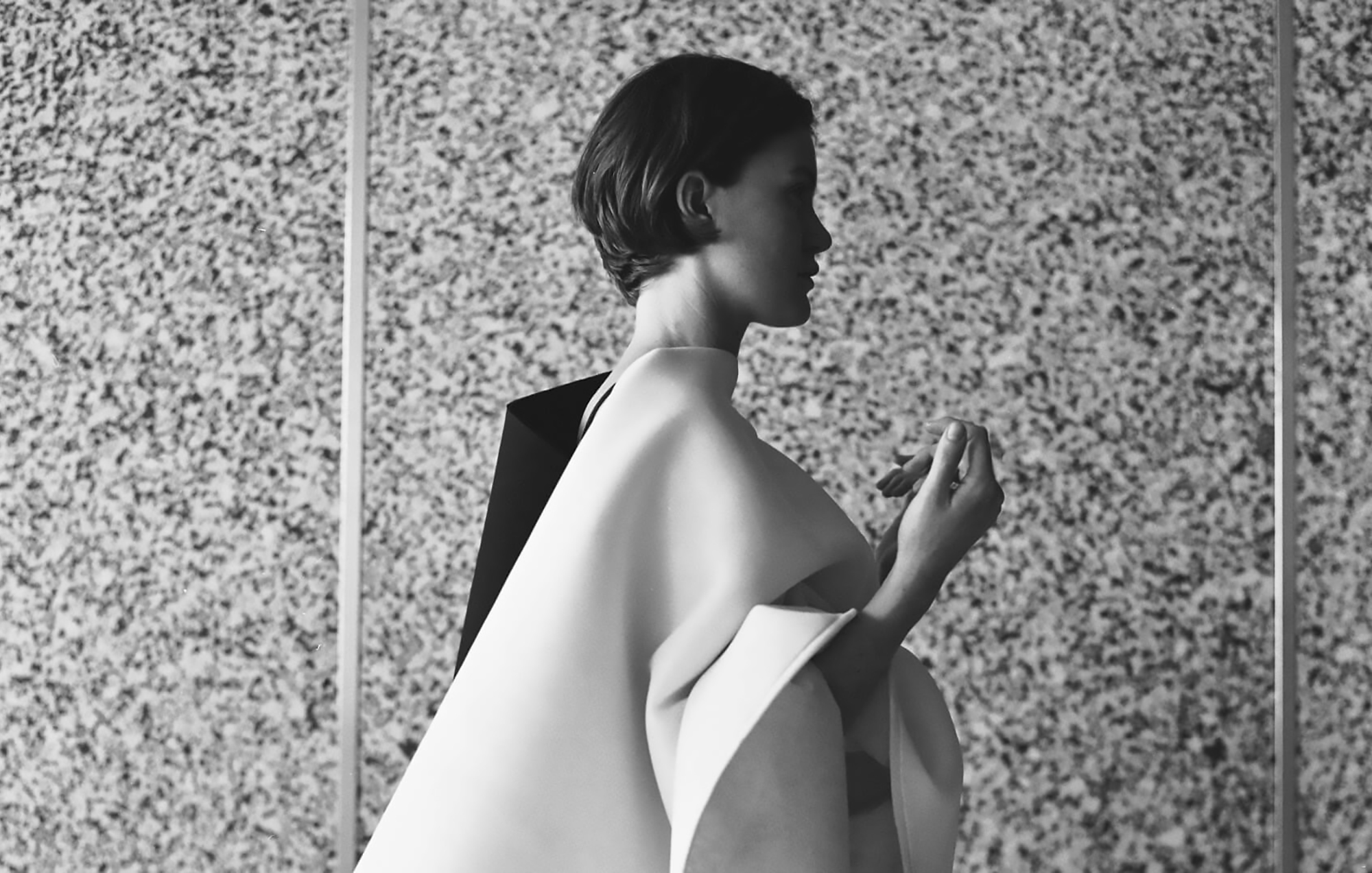
In George Orwell’s dystopian classic 1984, the author makes reference to a place where there is no darkness. A place, our lead protagonist Winston Smith believes to be free from the oppression of the totalitarian state under which he lives. Deceived to visit this place by the state Police, Smith instead finds himself under the glaring lights of an interrogation cell, permanently lit to aid his state of torture.
For We will meet in the place where there is no darkness artist Sebastian Kite created a site-specific installation exploring the relationship between space, light and sound. Constructed as a pavilion within the gallery space, Kite’s work referenced back to Orwell’s interrogation room using light as a material to create an ever-evolving space.
Constructed from a series of half-toned panels that suggest static or white noise, the space was further cut through it’s horizontal with a two-way mirror referencing the voyeurism, narcissism and sublimity at the heart of the interrogation process. Spatialised sound further acts to reinforce the dynamic while also dividing the space into four distinct areas.
Introduced into this space, a dancer acted as a protagonist, with each performance redefining the relationship between the architecture and the audio-visual score and composition. Held once a week live in the space, performances created a generative interplay of media creating an ever-evolving space over the lifetime of the exhibition.
For We will meet in the place where there is no darkness artist Sebastian Kite created a site-specific installation exploring the relationship between space, light and sound. Constructed as a pavilion within the gallery space, Kite’s work referenced back to Orwell’s interrogation room using light as a material to create an ever-evolving space.
Constructed from a series of half-toned panels that suggest static or white noise, the space was further cut through it’s horizontal with a two-way mirror referencing the voyeurism, narcissism and sublimity at the heart of the interrogation process. Spatialised sound further acts to reinforce the dynamic while also dividing the space into four distinct areas.
Introduced into this space, a dancer acted as a protagonist, with each performance redefining the relationship between the architecture and the audio-visual score and composition. Held once a week live in the space, performances created a generative interplay of media creating an ever-evolving space over the lifetime of the exhibition.
Artist: Sebastian Kite, Susie Browning & Collaborators
Curator: Dave Charlesworth, Ben Evans James
With thanks: Jake Biernat, Toby Bilton,
![]()
Curator: Dave Charlesworth, Ben Evans James
With thanks: Jake Biernat, Toby Bilton,







